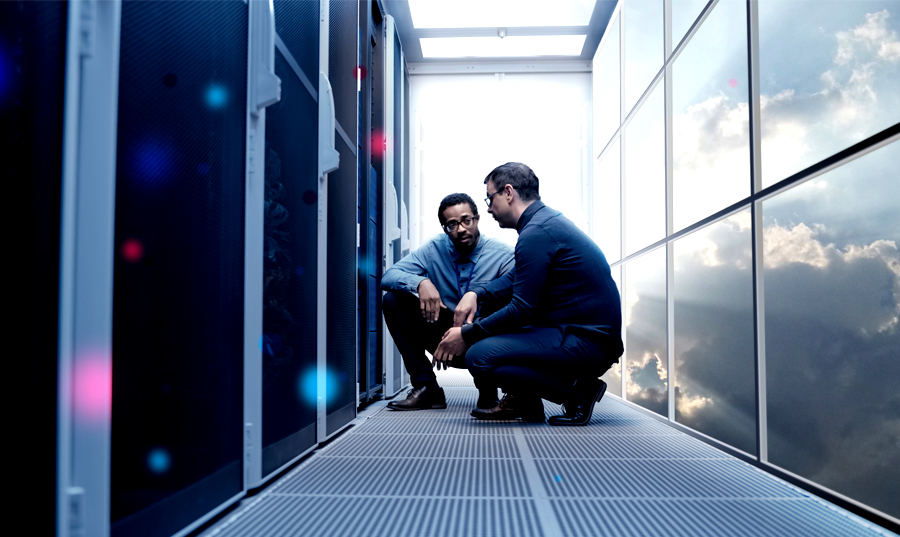Here’s a stat that may surprise you – 80% of consumers in the U.S. now subscribe to at least one paid streaming video service (source Deloitte Insights, June 2020). Some of this growth is attributable to the impact of COVID-19 and subsequent stay-at-home culture; a pre-COVID survey published by Deloitte in Q4 2019 recorded the figure at 73%. Nonetheless, whichever way you look at it, this is not an overnight trend. Streaming services are changing the game of content delivery – and doing so in many exciting ways.
The reality is that OTT services have played a fundamental role in this shift. OTT is driving professional video development, and the sheer amount of content now available to watch is incredible. The trouble is, much of this content is siloed. In the past 12 months, we have seen SVOD heavyweights Disney+ and Apple+ emerge on to the scene, Hulu expand its streaming offering, and HBO (HB) Max), NBC Universal (Peacock), and Viacom-CBS (re-branded CBS All Access) create their own streaming services.
We’re now also seeing the growth of live OTT services in areas such as news, where fresh faces are appearing alongside traditional broadcasters. These same broadcasters are also delivering spin-off news services, exclusively for online and streaming. The sports market is undergoing a similar shift – DAZN has targeted the traditional boxing and baseball markets, bidding for several media rights. GolfTV, which broadcasts the PGA Tour to audiences outside of the US, is also attempting to foray into the burgeoning streaming landscape.
Choice: A double-edged sword
SVOD and AVOD may have been a starting point for the industry, but we’re now seeing the whole spectrum of entertainment become available to viewers. From the perspective of the consumer, there’s choice, more choice, and even more choice.
While this seems like an ideal scenario, consumers now need to manage multiple subscriptions for these different services. Deloitte’s previously mentioned report noted that subscribers in the US now have an average of four paid streaming video subscriptions. At a time when many economies are stretched, it’s an extremely high number of video subscriptions for the average household to maintain at one time.
In turn, this has contributed to an all-time-high subscriber churn level as consumers bank on free trials to consume certain content or leverage the flexibility to cancel and re-join different platforms depending on what content they feel like watching. While a ‘super aggregation’ of services by Pay-TV providers poses one such solution, contests between media rights – not least in the live sports market – poses one of several obstacles in realizing this. This has led to an increasing appetite for direct-to-consumer delivery models.
User expectations are changing
This appetite applies not least to the world of live sports. Sports viewership has traditionally been the cornerstone of the Pay-TV market. While audiences are not loyal to the broadcaster providing the content, they are to a team, league, or individual player. But these eyeballs have helped increase the cost of media rights at almost every juncture, and the fans have been traditionally willing to pay the new going rate.
Sports fans are now starting to shift their viewing habits away from traditional Pay-TV subscriptions to streaming options. The likes of Hulu, for example, is providing cable-like TV experiences within a streaming package. While its services are dependent on broad content rights to service various sports options, it doesn’t typically offer value-added content beyond the program description. Content aggregators such as DAZN and FloSports are beginning to thrive, while mixed providers like YouTube Live and FuboTV are also increasingly bringing sports content to these streaming audiences. The leagues and competing teams themselves are likely to be the next big players in the fight for a share of consumers’ wallets.
Consumers still love live
Ultimately, consumers still love live content – particularly now, when there is less opportunity to watch events on the scale that we have become accustomed to in pre-COVID times. This requires rethinking how we’ve done things in the past. Live viewing is about enjoying an event and re-creating the sense of ‘being there’ as closely as possible. The viewer wants to be a part of something, which means creating a more profound experience before, during, and after, ensuring they have fun every step of the way.
By keeping the consumer engaged beyond the live experience, we can drive their fandom and increase their affinity with the brand. Service providers can achieve this by inserting overlays of data to the live feed or creating additional assets such as video interviews and exclusive behind-the-scenes access shots. It could also involve empowering the viewer to create their own viewpoints and control how they watch their favorite event. The bottom line is, we need to build new media experiences!
My MediaKind colleague, Tim Hughan, has written an excellent new application paper titled “Creating the experience: Engaging the fans“, which is now available to download. In the paper, Tim looks at the changing face of direct-to-consumer content delivery and how this can be a massive opportunity for organizations that own the content and associated rights. He discusses several real-world examples of delivering mainstream events, how they can be applied to various use cases, and why this can ensure a more compelling way to engage viewers worldwide and build their brand loyalty.



